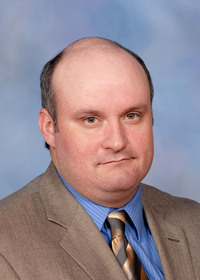Tank Mixtures of Forestry Site Preparation Herbicides Can Be Antagonistic
Control of competing vegetation is a major concern in pine plantation establishment. This problem is widespread, with a major portion of plantation establishment cost going toward controlling undesirable stems left after harvest or on plants that quickly invade a harvested site. Failure to control competing vegetation typically results in excessive loss of planted pine seedlings.
Since site preparation treatments involve considerable expense, landowners want the most effective treatment for their investments. Mixing two (sometimes—but rarely—three) herbicides in the same tank (referred to as “tank mixtures”) is often used to reduce application cost, increase the amount of vegetation control, or both.
Agricultural work has demonstrated that not all mixtures are symbiotic, and sometimes adding one chemical to another can actually decrease the effectiveness of both herbicides. This detrimental mixture effect is referred to as “antagonism.”
Since the introduction of the chemical imazapyr for forestry uses, interest in tank mixtures has been extremely high. Imazapyr products are used in site preparation and release tank mixes on thousands of acres each year. Currently, Chopper or Chopper GEN2 are used for site preparation, and Arsenal AC is used for release. 2,4-D and Tordon K are rarely used in current site preparation efforts. However, information regarding their use is valid and can be beneficial. Field studies evaluating different mixes using imazapyr have provided the following information:
Note: Always read and follow label directions when using any herbicide. The information given here is for educational purposes only. References to commercial products, trade names, or suppliers are made with the understanding that no endorsement is implied and that no discrimination against other products or suppliers is intended.
Arsenal AC and Garlon 4
These two herbicides mix together well; control of some waxy-leaf species is much better than using either chemical alone. The active ingredient in Garlon 4 is triclopyr in an ester formulation.
Arsenal AC and Garlon 3A
Triclopyr is the active ingredient in Garlon 3A, but this is the amine formulation. Garlon 4 mixes and performs well with Arsenal AC, but mixtures with Garlon 3A exhibit a decrease in vegetation control.
Arsenal AC and glyphosate (Accord, Accord XRT, Razor Pro, etc.)
This tank mixture is used more than any other in forestry. No antagonism has ever been observed in any of the applications.
Arsenal AC and 2,4-D (amine or ester)
These chemicals mix together with no problems; however, there does not appear to be any benefit in control of plants from adding 2,4-D to imazapyr.
Arsenal AC and Tordon K
All mixtures of these chemicals demonstrated antagonism. The active ingredient in Tordon is picloram, and adding it to imazapyr can result in reduced control of competing vegetation.
Arsenal AC and Escort XP
These two chemicals mix well together, and vegetation control is increased by the combinations.
Arsenal AC and Oust XP
This mix is used widely, mixes well, vegetation control is increased by their combination, and no antagonism has been observed.
Summary
While Arsenal AC was used for the field testing in this work, Chopper GEN2 is expected to provide similar results.
The tank mixes evaluated are classified into three categories: beneficial, no improvement, and antagonistic. Some of the paired chemicals are shown in the following categories:
Beneficial
Arsenal AC and glyphosate
Arsenal AC and Garlon 4
Arsenal AC and Escort XP
Arsenal AC and Oust XP
No Improvement
Arsenal AC and 2,4-D
Antagonistic
Arsenal AC and Tordon K
Arsenal AC and Garlon 3A
Publication 3781 (POD-10-21)
Revised by A. Brady Self, PhD, Associate Extension Professor, Forestry, from an earlier edition by Andrew W. Ezell, PhD.
The Mississippi State University Extension Service is working to ensure all web content is accessible to all users. If you need assistance accessing any of our content, please email the webteam or call 662-325-2262.




